
Welcome to the Club of Amsterdam Journal.
Jan. 2008: British Prime Minister Gordon Brown said that Britain is going to build 10 eco-cities before 2020 and will provide tens of millions pounds of financial support in this regard. Brown said the eco-city projects will lead world research in reducing carbon discharge, effective traffic and developing substitute energy. He signed a memorandum of understanding within the China-Britain project on building the Dongtan Eco-city in Shanghai‘s Chongming Island, the world’s first eco-city.
He also said that Britain is going to build 10 eco-cities before 2020 and will provide tens of millions pounds of financial support in this regard. Brown said the eco-city projects will lead world research in reducing carbon discharge, effective traffic and developing substitute energy.
Listen to Malcolm Smith, Director of Integrated Urbanism, ARUP. He talks about Dongtan Eco-city at our event about the future of Ecological Architecture – Thursday, March 20 in Rotterdam.
the future of Ecological Architecture – Thursday, March 20, 18:30-21:15
Where: Netherlands Architecture Institute, Museumpark 25, 3015 CB ROTTERDAM
We would like to thank our supporters Netherlands Architecture Institute, Etikstudio and Innergy Creations.
Felix Bopp, editor-in-chief
The world’s first sustainable city at Dongtan, in Shanghai, China
Aug. 2005: Arup, the global planning, engineering and design consultancy, has signed a contract with Shanghai Industrial Investment Corporation (SIIC) to plan the world’s first sustainable city – an eco-city – at Dongtan, in Shanghai, China. […]
Arup is responsible for the integrated master-planning of the built environment in Dongtan. Arup is providing a full range of services, including urban design, planning, sustainable energy management, waste management, renewable energy process implementation, economic and business planning, sustainable building design, architecture, infrastructure and even the planning of communities and social structures. The role is extremely broad and will require a long term vision and involvement from Arup.
Dongtan is situated in an extremely strategic position very close to Shanghai and on the third largest island in China, situated at the mouth of the Yangtze river. Dongtan is three quarters the size of Manhattan and will be developed as a sustainable city to attract a whole range of commercial and leisure investments. It will be a city where people will be able to live and work in a high quality environment. The intention is to evolve Arup’s sustainable urban design and planning into a blueprint for the future planning of Chinese cities.
Dongtan is currently a large area of mostly agricultural land which has been earmarked by the Mayor of Shanghai and the Chinese Premier as the site of China’s first sustainable eco city. A high quality road infrastructure is currently being built that connects Dongtan to the Shanghai mainland.
Feb. 2006: Deputy Prime Minister, John Prescott said: ”Arup’s impressive project at Dongtan is an excellent example of UK China partnership. It shows we have a lot to gain by exchanging ideas and technology. Dongtan shows the economic and social potential of investing in sustainable development. The first phase is a 630 hectare site where 50,000 people are expected to live. It’s going to be an economically, and environmentally, viable city, powered by renewable energy and as carbon-neutral as possible. Dongtan eco-city is a wonderful opportunity for China to demonstrate to the world how to approach ecologically-sound city design.”
BBC News – China plans eco-friendly city
China’s biggest eco-community; designed by Arup:
| Malcolm Smith, Director of Integrated Urbanism, ARUP is a speaker at our event about the future of Ecological Architecture – Thursday, March 20 in Rotterdam. |
Next Event

the future of Ecological Architecture
Thursday, March 20, 2008Registration: 18:30-19:00, Conference: 19:00-21:15
Tickets
Where: Netherlands Architecture Institute, Museumpark 25, 3015 CB ROTTERDAM
The speakers are
Malcolm Smith, Director of Integrated Urbanism, ARUP
About the Dongtan eco-city project in Shanghai
Bill Holdsworth, environmental, architectural and energy engineer
Design with a global impact
Thomas Rau, Director, Rau Architects
Oneplanetarchitecture
Moderated by Thomas Ugo Ermacora, Founder and Creative Director, Etikstudio
We would like to thank our supporters Netherlands Architecture Institute, Etikstudio and Innergy Creations.
Club of Amsterdam blog
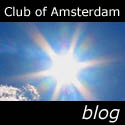
| Club of Amsterdam blog March 15: The Economic Storm November 19: Sex, The Internet’s Own Wasteland November 8: Sexuality in the 21st Century? |
News about the Future

Interdependencies on Energy and Climate Security for China and Europe’
the Interdependencies on Energy and Climate Security for China and Europe project aims to
- Identify the EU and China’s mutual interests, challenges and opportunities on energy and climate security over the next 25 years.
- Generate a shared vision for achieving the goals of both regions in order to strengthen long-term engagement on these issues.
- Produce high quality analysis on the priority opportunities for future collaboration to meet our climate and energy security goals.
The project team will identify the mutual goals of China and the EU, synthesise the research findings and generate policy options around key issue clusters.

Photoluminescent materials accumulate light energy under ordinary daylight conditions, which is released at the onset of darkness. Additional signage may be integrated in floor systems since during emergency events, people intuitively look downwards at the floor, even without smoke development. Examples of such markings include stripes, arrows, circles, ‘foot steps’, as well as floor pictogrammes, which may remain visible under ordinary light conditions. Signage comprises of luminescent aggregates, which can be integrated in common floor systems like terrazzo, gravel- and mortar floor, as well as self-levelling floors.
International Union for Conservation of Nature
IUCN, the International Union for Conservation of Nature, helps the world find pragmatic solutions to our most pressing environment and development challenges. IUCN supports scientific research; manages field projects all over the world; and brings governments, non-government organizations, United Nations agencies, companies and local communities together to develop and implement policy, laws and best practice.
IUCN is the world’s oldest and largest global environmental network. IUCN is a democratic membership union with more than 1,000 government and NGO member organizations, and some 10,000 volunteer scientists in more than 160 countries.
IUCN’s work is supported by 1,100 professional staff in 62 offices and hundreds of partners in public, NGO and private sectors around the world. IUCN’s headquarters are located in Gland, near Geneva, in Switzerland.
Out of many – here some examples of IUCN’s activities:

13 Mar 2008 Montenegro and IUCN unite efforts to protect nature – The creation of marine protected areas to safeguard biodiversity has been identified as a first step to meet international standards

23 Jan 2008 Corals: facing the death sentence – The future for corals does not look bright. That’s the message from the first in-depth analysis of 2005’s widespread coral bleaching in the Caribbean

13 Feb 2008 Body part by body part, Sumatran Tigers are being sold into extinction – Laws protecting the critically endangered Sumatran Tiger have failed to prevent tiger body parts being offered on open sale in Indonesia, according to a TRAFFIC report launched today.
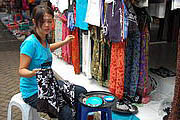
07 Mar 2008 International Women Environmental Entrepreneurs Fair – IUCN will use the platform offered by the World Conservation Congress to organize the International Women Environmental Entrepreneurs Fair, a space to make visible the economic, social and environmental inputs that women entrepreneurs bring to their countries and the world through their “green enterprises”
Recommended Book
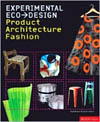
Experimental Eco Design: Architecture / Fashion / Product
by Cara Brower, Rachel Mallory, Zachary Ohlman
A showcase of outstanding and innovative work that shows that EcoDesign needn’t mean dull design
This book highlights new ways of thinking about sustainable design, while showcasing innovative product.
It is a collection of outstanding, innovative product, graphic, fashion, and environment designs. The thoughts of the world’s leading designers – Ezio Manzini (Italy), Ed Van Hinte (the Netherlands), Droog members Richard Hutten (the Netherlands) and Bless (France), Tom Dixon (UK), Jan Dranger (Sweden) and Edwin Datschefski (UK) – provide a grounding in the materials, methods, and processes behind outstanding projects: their work provides visual inspiration for innovative design.
Experimental EcoDesign offers inspirational reading for anyone interested in green design also coming with an extensive directory of sources of materials, manufacturers, design studios and organizations.
Futurist Portrait: Alvin & Heidi Toffler

Alvin Toffler (born October 3, 1928) is an American writer and futurist, known for his works discussing the digital revolution, communications revolution, corporate revolution and technological singularity. A former associate editor of Fortune magazine, his early work focused on technology and its impact (through effects like information overload). Then he moved to examining the reaction of and changes in society. His later focus has been on the increasing power of 21st century military hardware, weapons and technology proliferation, and capitalism. He is married to Heidi Toffler, also a writer and futurist. They live in Los Angeles. They wrote the books credited to “Alvin Toffler” together.
Accenture, the management consultancy, has dubbed him the third most influential voice among business leaders, after Bill Gates and Peter Drucker. He has also been described in the Financial Times as the “world’s most famous futurologist”.
Toffler explains, “Society needs people who take care of the elderly and who know how to be compassionate and honest. Society needs people who work in hospitals. Society needs all kinds of skill that are not just cognitive; they’re emotional, they’re affectional. You can’t run the society on data and computers alone.” Toffler also states in, Rethinking the Future, that “The illiterate of the 21st century will not be those who cannot read and write, but those who cannot learn, unlearn, and relearn.”
In his book The Third Wave Toffler describes three types of societies, based on the concept of ‘waves’ – each wave pushes the older societies and cultures aside.
- First Wave is the society after agrarian revolution and replaced the first hunter-gatherer cultures.
- Second Wave is the society during the Industrial Revolution (ca. late 1600s through the mid-1900s). The main components of the Second Wave society are nuclear family, factory-type education system and the corporation. Toffler writes: “The Second Wave Society is industrial and based on mass production, mass distribution, mass consumption, mass education, mass media, mass recreation, mass entertainment, and weapons of mass destruction. You combine those things with standardization, centralization, concentration, and synchronization, and you wind up with a style of organization we call bureaucracy.”
- Third Wave is the post-industrial society. Toffler would also add that since late 1950s most countries are moving away from a Second Wave Society into what he would call a Third Wave Society. He coined lots of words to describe it and mentions names invented by him (super-industrial society) and other people (like the Information Age, Space Age, Electronic Era, Global Village, technetronic age, scientific-technological revolution), which to various degrees predicted demassification, diversity, knowledge-based production, and the acceleration of change (one of Toffler’s key maxims is “change is non-linear and can go backwards, forwards and sideways”).
In this post-industrial society, there is a lot of diversity in lifestyles (“subcults”). Adhocracies (fluid organizations) adapt quickly to changes. Information can substitute most of the material resources and becomes the main material for workers (cognitarians instead of proletarians), who are loosely affiliated. Mass customization offers the possibility of cheap, personalized, production catering to small niches (see Just In Time production). The gap between producer and consumer is bridged by technology using a so called configuration system. “Prosumers” can fill their own needs. This was the notion that new technologies are enabling the radical fusion of the producer and consumer into the prosumer. In some cases prosuming entails a “third job” where the corporation “outsources” its labor not to other countries, but to the unpaid consumer, such as when we do our own banking through an ATM instead of a teller that the bank must employ, or trace our own postal packages on the internet instead of relying on a paid clerk.
Aging societies will be using new (medical) technologies from self-diagnosis to instant toilet urinalysis to self-administered therapies delivered by nanotechnology to do for themselves what doctors used to do. This will change the way the whole health industry works.
Since the 1960s, people have been trying to make sense out of the impact of new technologies and social change. Toffler’s writings have been influential beyond the confines of scientific, economic and public policy discussions. Techno music pioneer Juan Atkins cites Toffler’s phrase “techno rebels” in Future Shock as inspiring him to use the word “techno” to describe the musical style he helped to create.
Toffler’s works and ideas have been subject to various criticisms, usually with the same argumentation used against futurology: that foreseeing the future is nigh impossible. In the 1990s, his ideas were publicly lauded by Newt Gingrich.
In 1996 Alvin and Heidi Toffler founded Toffler Associates, an executive advisory firm committed to helping commercial firms and government agencies adjust to the changes described in the Tofflers’ works.
The development Toffler believes may go down as this era’s greatest turning point is the creation of wealth in outer space. Wealth today, he argues, is created everywhere (globalisation), nowhere (cyberspace), and out there (outer space). Global positioning satellites are key to synchronising precision time and data streams for everything from cellphone calls to ATM withdrawals. They allow Just In Time productivity because of precise tracking. GPS is also becoming central to air-traffic control. And satellites increase agricultural productivity through tracking weather, enabling more accurate forecasts.
Two major predictions of Toffler’s – the paperless office and human cloning – have yet to be realized, not due to technological barriers but to sociological and politico-religious conditions.
Alvin Toffler co-wrote his books with his wife Heidi. A few of their well-known works are: Future Shock (1970), The Eco-Spasm Report (1975), The Third Wave (1980), Previews & Premises (1983), Powershift: Knowledge, Wealth and Violence at the Edge of the 21st Century (1990), War and Anti-War (1995), Revolutionary Wealth (2006)
Alvin and Heidi Toffler
This is a little known documentary based on the book Future Shock by Alvin Toffler.
The movie “Future Shock” came out in 1972 and features Orson Welles as the narrator. I was most amused by the high amount of paranoia in regards to the future… some of the segments (like people choosing their own skin color) are downright hilarious. Worth a look – at the very least for its historical value.
Agenda
| NEW DATE March 20 18:30 – 21:15 | the future of Ecological Architecture Location: Netherlands Architecture Institute, Museumpark 25, 3015 CB ROTTERDAM | |
| April 24 18:30 – 21:15 | the future of Money Location: Museum de Burcht van Berlage, Henri Polaklaan 9, 1018 CP Amsterdam [near Artis Zoo] | |
| May 29 18:30 – 21:15 | the future of Children Learning to Play Location: Waag Society, Nieuwmarkt 4, 1012 CR Amsterdam [Center of the Nieuwmarkt] | |
| June 26 18:30 – | Taste of Diversity – the future of INDIA |
Club of Amsterdam Open Business Club
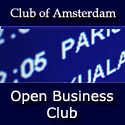
Club of Amsterdam Open Business Club
Are you interested in networking, sharing visions, ideas about your future, the future of your industry, society, discussing issues, which are relevant for yourself as well as for the ‘global’ community? The future starts now – join ouronline platform …





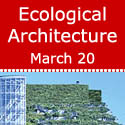
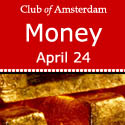
Leave a Reply